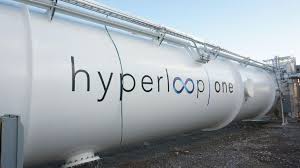
Breaking News
 Mike Rowe appears to be receiving flak for daring to explore the potential dangers of vaccines...
Mike Rowe appears to be receiving flak for daring to explore the potential dangers of vaccines...
 How to Keep Potatoes Fresh for a Year!
How to Keep Potatoes Fresh for a Year!
 A high school student has amazed the global science community with a discovery...
A high school student has amazed the global science community with a discovery...
Top Tech News
 The 6 Best LLM Tools To Run Models Locally
The 6 Best LLM Tools To Run Models Locally
 Testing My First Sodium-Ion Solar Battery
Testing My First Sodium-Ion Solar Battery
 A man once paralyzed from the waist down now stands on his own, not with machines or wires,...
A man once paralyzed from the waist down now stands on his own, not with machines or wires,...
 Review: Thumb-sized thermal camera turns your phone into a smart tool
Review: Thumb-sized thermal camera turns your phone into a smart tool
 Army To Bring Nuclear Microreactors To Its Bases By 2028
Army To Bring Nuclear Microreactors To Its Bases By 2028
 Nissan Says It's On Track For Solid-State Batteries That Double EV Range By 2028
Nissan Says It's On Track For Solid-State Batteries That Double EV Range By 2028
 Carbon based computers that run on iron
Carbon based computers that run on iron
 Russia flies strategic cruise missile propelled by a nuclear engine
Russia flies strategic cruise missile propelled by a nuclear engine
 100% Free AC & Heat from SOLAR! Airspool Mini Split AC from Santan Solar | Unboxing & Install
100% Free AC & Heat from SOLAR! Airspool Mini Split AC from Santan Solar | Unboxing & Install
 Engineers Discovered the Spectacular Secret to Making 17x Stronger Cement
Engineers Discovered the Spectacular Secret to Making 17x Stronger Cement
Elon Musk promises new Hyperloop tunnel after speed record broken

TUM Hyperloop has set a new speed record of 463 km/h (288 mph) at the fourth SpaceX Hyperloop Pod Competition. The win was announced by Hyperloop's official Twitter account. After confirming the speed record, Elon Musk announced that next year's competition will take place in a 10 km vacuum tunnel with a curve rather than the current 1 mile (1.6 km) straight above-ground tube at the SpaceX headquarters in Hawthorne, California.
Although the win was another step forward for the theoretical transportation technology, TUM only beat the previous record by 4 mph, far short of the technology's theoretical 760 mph max speed. The previous record was set by the same team (then known as WARR Hyperloop), in last year's competition.
TUM had originally hoped to hit a much higher speed of 373 mph, or roughly half the speed of sound, with a pod that doubled the power output of last year's prototype. However, Teslerati reports that the pod was forced to come to an emergency stop after it suffered visible damage. At just 1.7 meters long and weighing 70 kg, the prototype is still a fraction of the size of what the eventual passenger-ready Hyperloop pods will be.
Musk's newly proposed tunnel will be a big change for future competitions. At 10 km long it would be over five times longer than all three of the current Hyperloop test tracks, and the inclusion of a curve would bring it far closer to what Hyperloop tracks will have to be like in the real world. The new tunnel would likely introduce additional challenges for the team's competing in the competition.

 Wall Street wants to go 24/7
Wall Street wants to go 24/7

